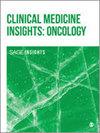A Novel Porphyromonas gingivalis Infection-Related Inflammatory Response-Related Genes Signature Predicts the Prognosis of Esophageal Squamous Cell Carcinoma
IF 1.9
4区 医学
Q3 ONCOLOGY
引用次数: 0
Abstract
Background:Our previous research showed that Porphyromonas gingivalis ( P. gingivalis) infection can activate the inflammatory signaling pathway and promotes the malignancy development of esophageal squamous cell carcinoma (ESCC). However, the prognostic significance of inflammatory response-related genes (IRRGs) in P. gingivalis-infected ESCC requires further elucidation. Hence, our study constructed a prognostic signature based on P. gingivalis and IRRGs to forecast the survival of patients with ESCC, which may provide insight into new treatment options for ESCC patients.Methods:Differentially expressed genes (DEGs) were identified in P.gingivalis-infected and P.gingivalis-uninfected ESCC cell by RNA sequencing. A risk model was constructed and validated using the The Cancer Genome Atlas (TCGA) and Gene Expression Omnibus (GEO) database by using univariate Cox regression analysis, LASSO, and the multivariate Cox regression analysis. Kaplan-Meier analysis was carried out to compare the overall survival (OS) between high-risk and low-risk groups. Single-sample gene set enrichment analysis was used to analyze the immune cell infiltration. The Genomics of Drug Sensitivity in Cancer database was used to predict drug sensitivity.Results:There were 365 DEGs between the P.gingivalis-infected and P.gingivalis-uninfected groups. Four genes including DKK1, ESRRB, EREG, and RELN were identified to construct the prognostic risk model ( P = .012, C-index = 0.73). In both the training and validation sets, patients had a considerably shorter OS in the high-risk group than those in the low-risk group ( P < .05). A nomogram was established using the risk score, gender, and N stage which could effectively forecast the prognosis of patients ( P = .016, C-index = 0.66). The high-risk group displayed lower immune infiltrating cells, such as activated dendritic cells, type 2 T helper cells, and neutrophils ( P < .05). A total of 41 drugs, including dactinomycin, luminespib, and sepantronium bromide, had a significant difference in IC50 between the 2 subgroups.Conclusion:We demonstrated the potential of a novel signature constructed from 4 P. gingivalis-related IRRGs for prognostic prediction in ESCC patients.新型牙龈卟啉菌感染相关炎症反应相关基因信号可预测食管鳞状细胞癌的预后
背景:我们之前的研究表明,牙龈卟啉单胞菌(P. gingivalis)感染可激活炎症信号通路并促进食管鳞状细胞癌(ESCC)的恶性发展。然而,炎症反应相关基因(IRRGs)在牙龈脓毒性食管鳞癌(ESCC)中的预后意义尚需进一步阐明。因此,我们的研究构建了一个基于牙龈脓毒性和IRRGs的预后特征,以预测ESCC患者的生存率,这或许能为ESCC患者提供新的治疗方案。方法:通过RNA测序鉴定了感染牙龈脓毒性和未感染牙龈脓毒性的ESCC细胞中的差异表达基因(DEGs)。通过单变量 Cox 回归分析、LASSO 和多变量 Cox 回归分析,利用癌症基因组图谱(TCGA)和基因表达总库(GEO)数据库构建并验证了风险模型。采用卡普兰-梅耶分析比较高危组和低危组的总生存率(OS)。单样本基因组富集分析用于分析免疫细胞浸润。结果显示:感染牙龈脓毒性菌组与未感染牙龈脓毒性菌组之间存在365个DEGs。包括 DKK1、ESRRB、EREG 和 RELN 在内的四个基因被确定为构建预后风险模型的基因(P = .012,C-指数 = 0.73)。在训练集和验证集中,高风险组患者的 OS 短于低风险组患者(P < .05)。利用风险评分、性别和 N 分期建立的提名图能有效预测患者的预后(P = .016,C 指数 = 0.66)。高危组的免疫浸润细胞,如活化树突状细胞、2 型 T 辅助细胞和中性粒细胞较少(P < .05)。结论:我们证明了由 4 种牙龈脓胞相关 IRRGs 构建的新型特征用于 ESCC 患者预后预测的潜力。
本文章由计算机程序翻译,如有差异,请以英文原文为准。
求助全文
约1分钟内获得全文
求助全文
来源期刊

Clinical Medicine Insights-Oncology
Medicine-Oncology
CiteScore
2.40
自引率
4.50%
发文量
57
审稿时长
8 weeks
期刊介绍:
Clinical Medicine Insights: Oncology is an international, peer-reviewed, open access journal that focuses on all aspects of cancer research and treatment, in addition to related genetic, pathophysiological and epidemiological topics. Of particular but not exclusive importance are molecular biology, clinical interventions, controlled trials, therapeutics, pharmacology and drug delivery, and techniques of cancer surgery. The journal welcomes unsolicited article proposals.
 求助内容:
求助内容: 应助结果提醒方式:
应助结果提醒方式:


